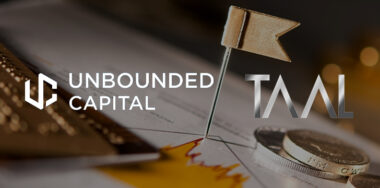Suppose you’re a government or central bank and have made the wise decision to create a central bank digital currency (CBDC) on the BSV blockchain. How do you maintain complete control and governance of the currency unit you’ve made without interference from outsiders? What if you have other data you don’t want on a global network, even if it’s encrypted/obscured somehow? Here’s where we start explaining the concept of “Sovereign Nodes” in Dr. Craig S. Wright’s The Bitcoin Masterclasses series.
“What is a ‘Sovereign Node?’ Effectively what we’re doing is a system that timestamps, updates, and records information on Bitcoin; does the basic function of a distributed timestamp server; does the basic function of recording information—but holds other information that other people don’t even need to understand or know,” Dr. Wright explains.
Imagine Bitcoin/blockchain data that is recorded/valid in one country, but not seen in another. At first, that sounds like a strange idea, given the blockchain is supposed to be a distributed, universal ledger. While the entire worldwide ledger must follow Bitcoin’s base protocol rules, it’s possible to create sub-protocols only recognized in regions where machines are configured to follow those rules.
For governments, it’s as simple as defining the rules for their chosen sub-protocols depending on their requirements, Dr. Wright says. These don’t replace any of the base Bitcoin protocol rules, but instead add extra information.
This could work for CBDCs, and it could also work for governments who’d like to store information on their citizens without risking it being viewed by anyone outside the country. The example he gives is passport data, which may be cross-checked with validation data on the sovereign node, and, if valid, would provide that validation check as positive to the wider network.
How might Sovereign Nodes interact with the Bitcoin Network?
“Say there’s 10 government nodes on different islands in the Philippines,” Dr. Wright says. “And those government nodes can all share information; then those government nodes can decide whether or not to forward that information to the Bitcoin network for final processing, if that’s how they wanted to run it. “
This can all be set up to happen in milliseconds, too fast for any human to intervene in an attempt to cheat or “game the system.”
“Now, if we required a hash solution—or something else that was given from the government—and you didn’t have that, that hash solution comes as a hashed chain that’s maybe an indexed value based on information held in a government server…when you create the transaction you get a challenge, and all of that gets shared around government servers,” he states. Someone can receive (or may need to) that information to solve a hash puzzle and include it in a Bitcoin transaction to make it valid.
He notes that these processes could also happen on non-mining, secondary layers if that’s desired—although governments may prefer to trust actual mining nodes for timestamping and double-spend prevention. This is an unfamiliar concept to many Bitcoin developers, and there’s a short discussion in this session about whether a Sovereign Node actually counts as a node on the Bitcoin network if it’s handling information only those nodes recognize.
It all depends on the use case, Dr. Wright explains. Though local nodes may recognize their own sub-protocol rules, nothing is valid on Bitcoin’s universal ledger (i.e., the blockchain) unless it’s contained in a transaction the entire network has processed.
Session 3 of Day 1 starts here. If you’d like to see the rest of Season 7 or any previous season of The Bitcoin Masterclasses, they’re all available for viewing on the CoinGeek YouTube channel.
To learn more about central bank digital currencies and some of the design decisions that need to be considered when creating and launching it, read nChain’s CBDC playbook.
The Bitcoin Masterclasses: Here are the applications made possible by blockchain
New to blockchain? Check out CoinGeek’s Blockchain for Beginners section, the ultimate resource guide to learn more about blockchain technology.











